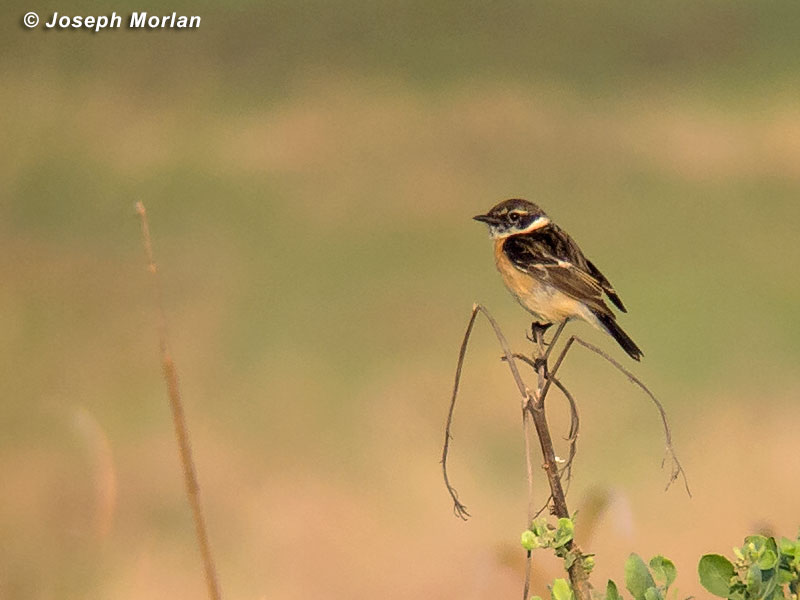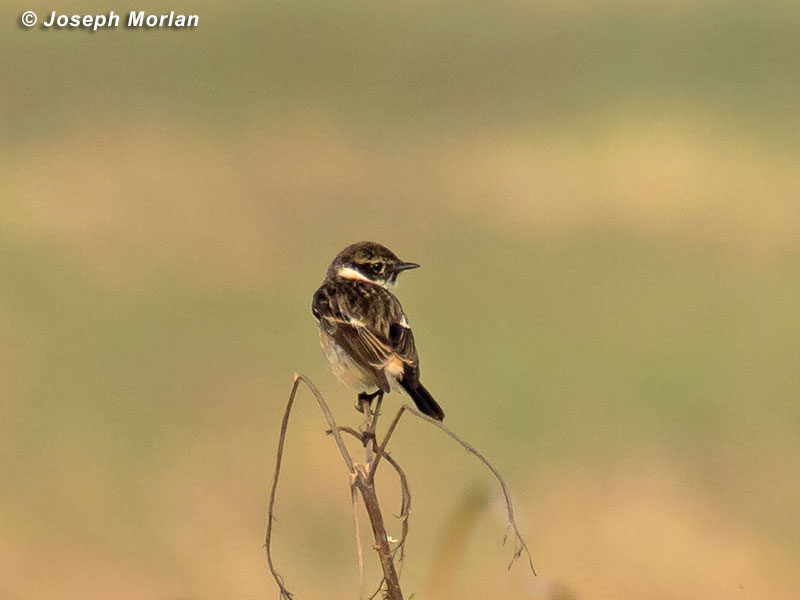

Stonechats were formerly (e.g. HBW) classified in the thrush family (Turdidae) but have since been moved to a greatly
expanded Old World Flycatcher family (Muscicapidae). Svensson et al 2009 (Collins Bird Guide) refers to the maurus
subspecies group as 'Eastern Stonechat,' a name we used for these birds in the field.
This form is often split (e.g. IOC) as a separate species, Stejneger's Stonechat (Saxicola stejnegeri),
but here I follow the latest Clements and treat it as a race of Siberian Stonechat. Saxicola maurus (incl
ssp variegatus) is also split from S torquatus (as Siberian Stonechat) by Urquhart & Bowley 2002
(Stonechats), CSNA/Dutch Birding, OSME and China Bird Report; but not by BOURC, AERC, OBC, AOU, BLI (under review),
Cornell/Clements or HBW.
In the past all the stonechats were lumped under the name S. torquatus. Here is what Urquhart & Bowley
2002 say about the differences between Stejneger's and other races of Siberian Stonechat.
- Very similar in plumage detail and size to maurus, often impossible to separate in the field. c15% wider base to bill.
- Adult male breeding: virtually identical to maurus but variably shows less white on rump/uppertail-coverts; rufous on breast slightly more extensive.
- Adult male non-breeding: fringes to upperpart & underpart feathers darker rufous than maurus (more apparent in E of range).
- Female: virtually identical to maurus.
So not easy to distinguish outside of its normal range. However, this is the race (species?) which regularly
winters throughout most of Thailand. An unknown form has been reported breeding in NW Thailand. Furthermore Zink
et al 2009 showed that maurus and stejnegeri are not even each others closest relatives (thus the
treatment of stejnegeri as a full species by some authors).
The rump looks mostly orange suggesting this is an immature (formative plumage) and head pattern suggests male.
Females are duller. The lack of dark spots on the rump points to the S. maurus group.
Digiscoped with Panasonic DMC-LX5 | Nikon FieldScope III | 30XWA |hand-held (no adapter).